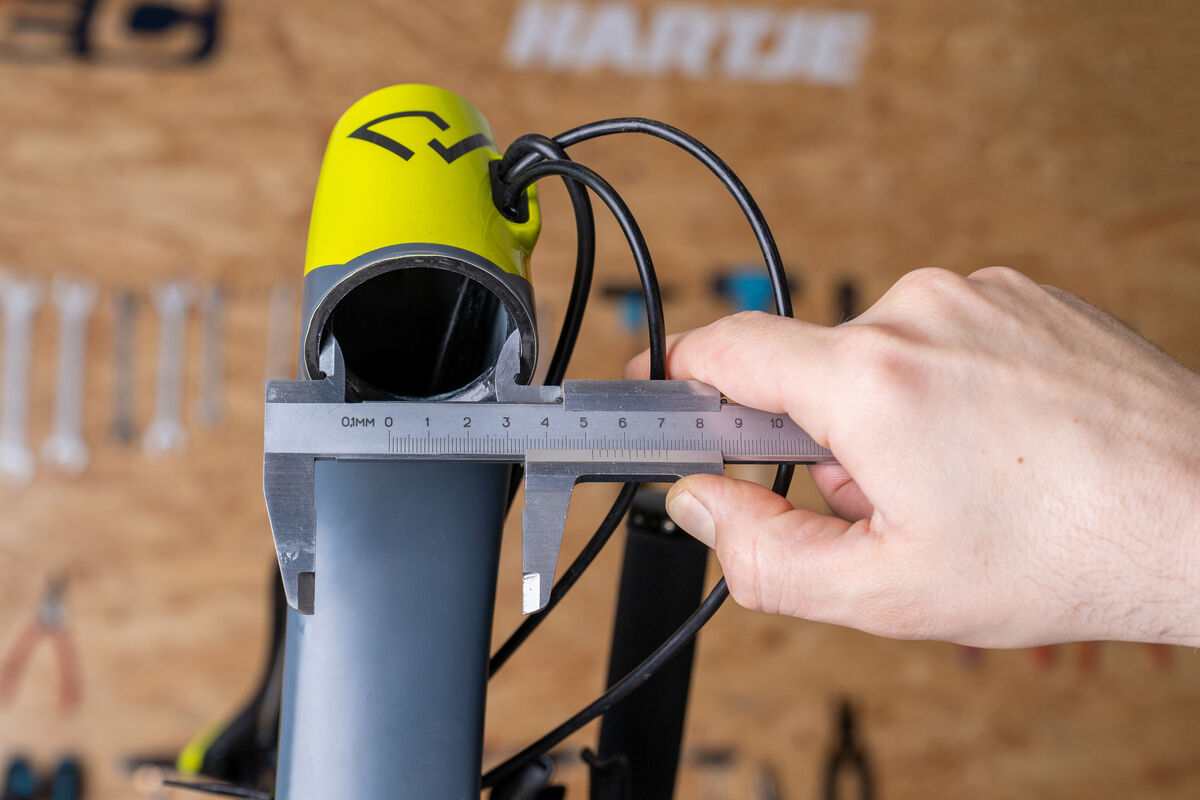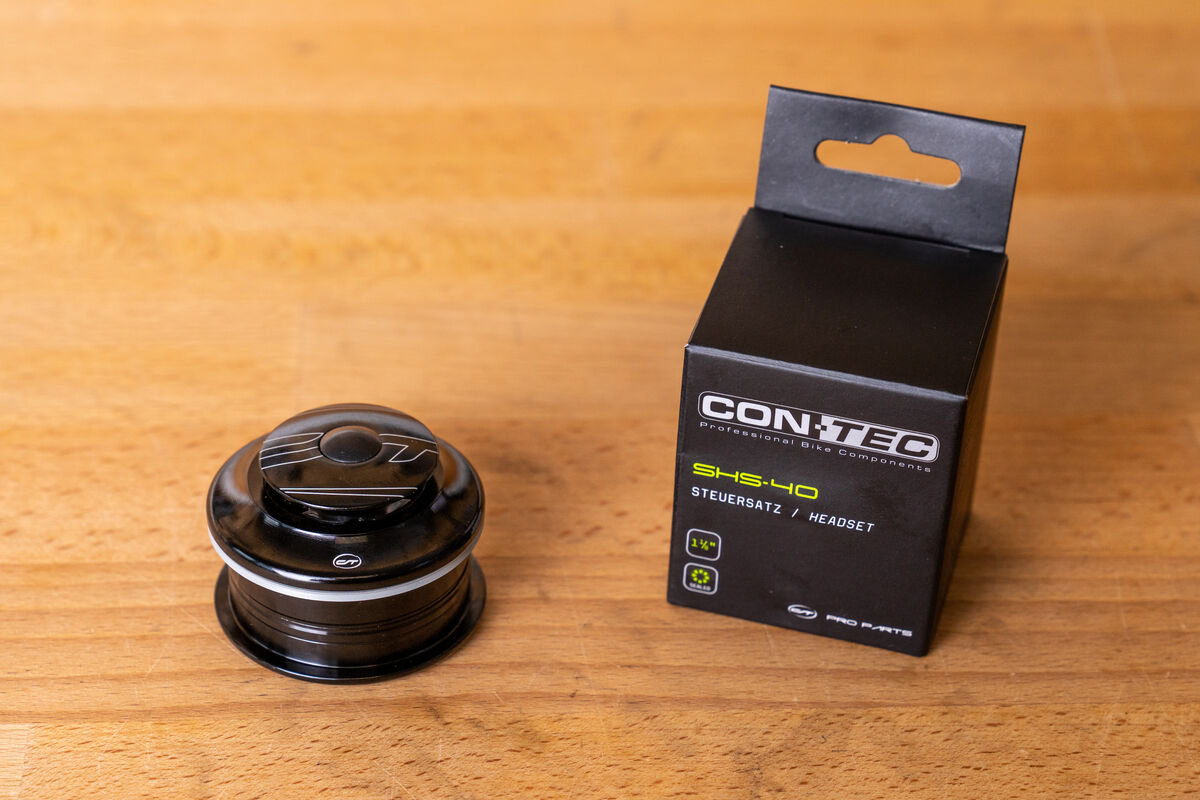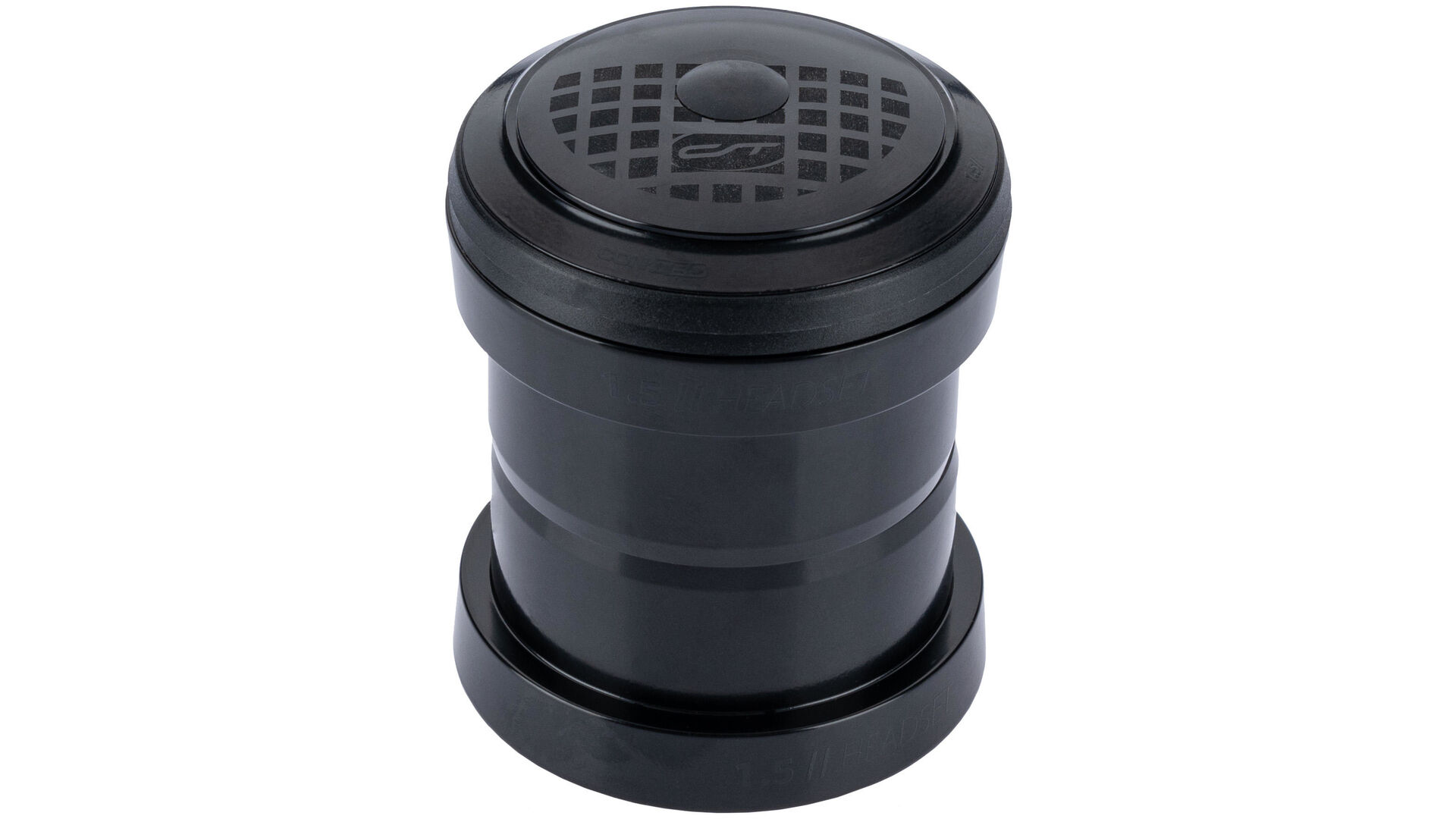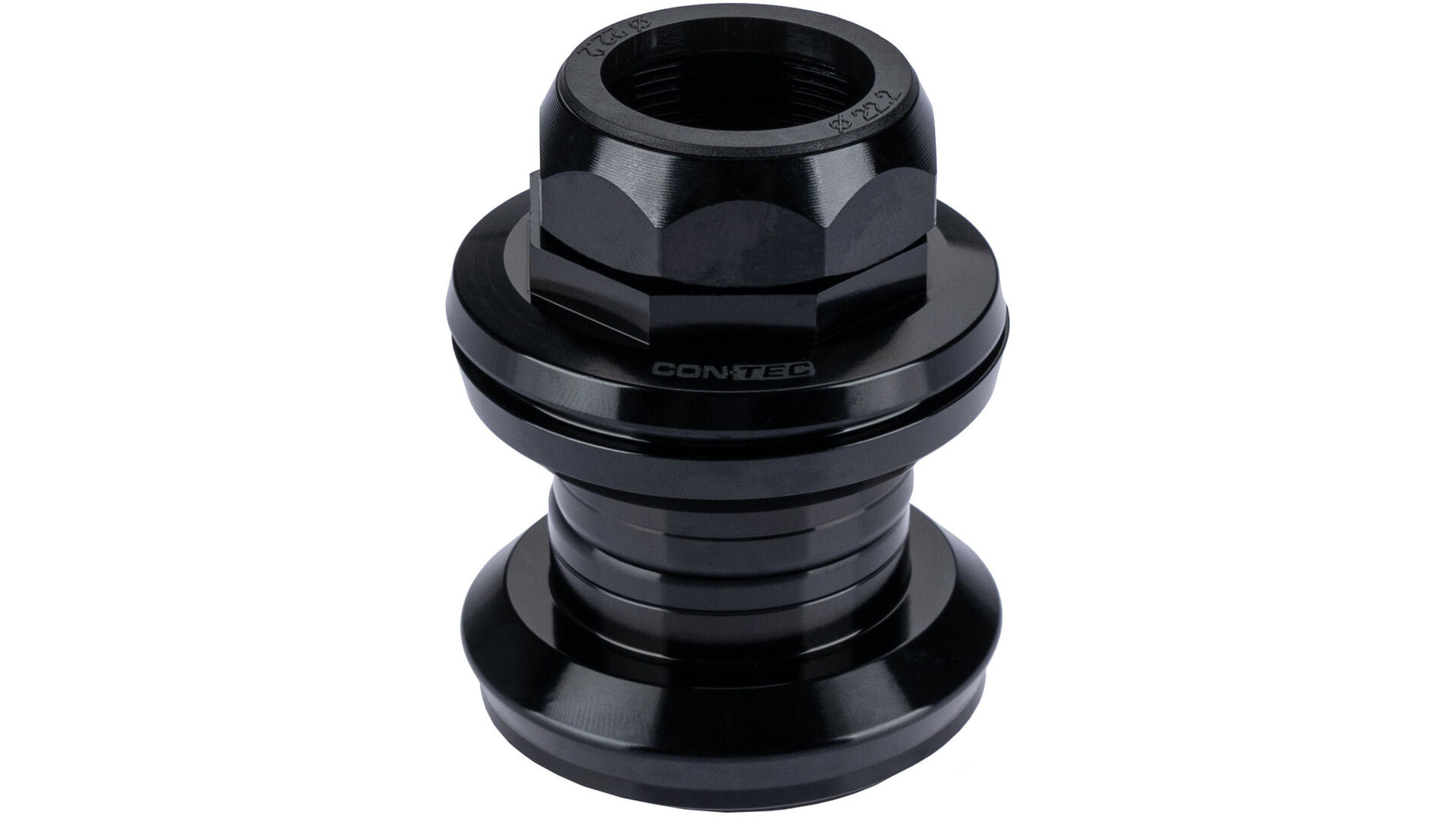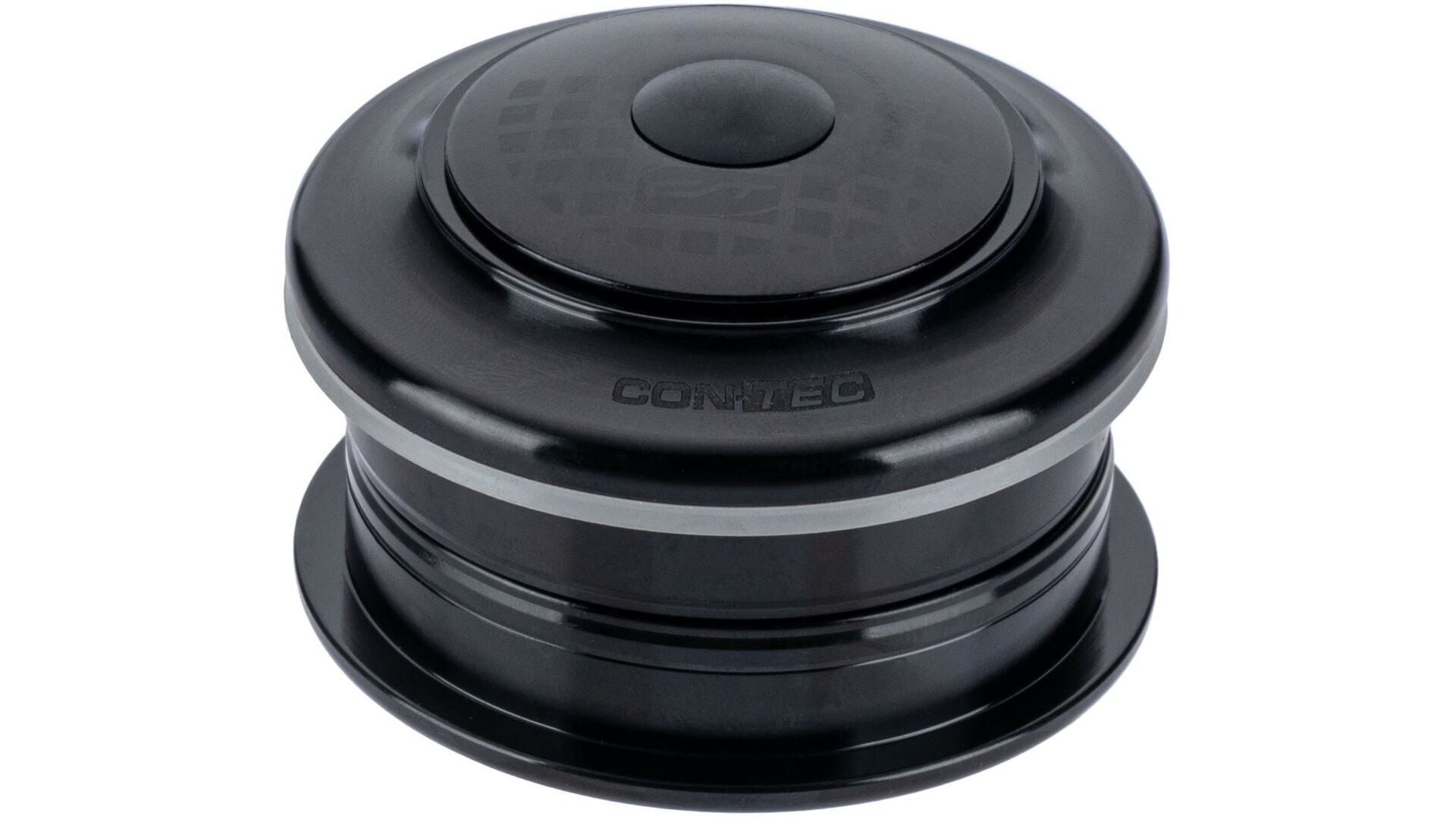How do I find the correct headset? S.H.I.S.: Our easy guide to the headset designation standard
The headset is the collection of bearings that ensure friction-free steering on your bike – or in simple terms: it controls the mobility of the fork shaft inside the head tube to the left and right. There is one bearing at the top and one at the bottom of the head tube. In the past, threadless (ahead) or threaded headsets were used. Today, there are many more types of headset to cater for the growing diversity of bike types and their specific uses. The big manufacturers have come together to create a standardised system for the designation of headsets to make life easier for us cyclists: S.H.I.S.
The code of the S.H.I.S. headset standard comprises information about the type of bearing cup used, and the inner and outer diameters of the bearings. The S.H.I.S. designation for a complete headset consists of exactly these 3 values for the upper and lower part of the headset.
What types of headsets are there?
EC – External Cup
In an EC headset, the bearing cups and bearings are positioned on the outside of the frame, basically on the head tube. The thinner part of the bearing cup is pressed into the frame, while the larger part of the bearing cup provides the seating for the bearings.
ZS – Zero Stack (semi-integrated)
A ZS headset has significantly flatter bearing cups compared to an EC headset. ‘Zero stack’ means something like ‘no added height’. When installed, only a few millimetres of the bearing cup remain visible. The bearing with the bearing cup is pressed into the frame. Afterwards, only a thin ring around the head tube will be visible.
IS – (Integrated Style)
In an IS headset, the bearings are installed inside the shaft tube. These headsets are also called ‘integrated’, as no bearing cup is required and the bearing sits directly in the frame.
Deciphering an S.H.I.S. code
Let’s do this with one of our regular headsets, the CONTEC “AHS-40”. The S.H.I.S. code for this headset is the following:
EC39/28,6 EC39/31
Let’s divide this code into two parts for easier understanding. The first letter/number combination EC39/28.6, refers to the upper part of the headset. The second part EC39/31, refers to the lower part of the headset.
EC39/28.6 – the upper part of the headset
As we already explained above, the letters refer to the type of bearing cups. Here, we therefore have an EC headset with external bearing cups. The numbers that follow indicate the diameters. They describe the outer and inner diameters of the bearing. This bearing has an outer diameter of 39 mm and an inner diameter of 28.6 mm. The diameter of the fork shaft should therefore also be 28.6 mm (1 1/8”).
EC39/31 – the lower part of the headset
The information about the lower part of the headset is deciphered applying the same principle. ‘EC’ once again denotes an external bearing cup. 39 and 31 are the bearing diameters. The lower bearing has an outer diameter of 39 mm and an inner diameter of 31 mm.
How do I find the correct headset for my frame-fork combination?
You will need 4 measurements to find the correct headset for your frame-fork combination. Use a calliper on the frame and fork to take the measurements. You will also need to know which type of headset – EC, ZS or IS – that is recommended by the manufacturer of your frame. Once you have that information, you can start measuring. You will need the inner diameter of the bearing seats on the frame shaft, and the two diameters of the fork shaft. Take one outer and inner diameter measurement at the very bottom of the fork crown, and the second at approximately the height of the stem. These five values will help you chose the correct headset from the S.H.I.S. standard.
We hope that we have made the S.H.I.S. headset standard a bit easier to understand to help you when selecting your next headset.
